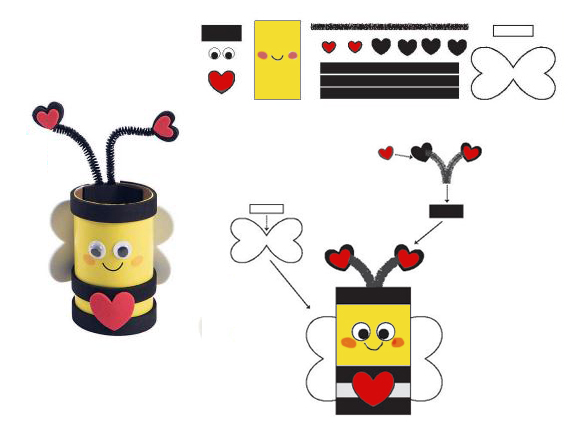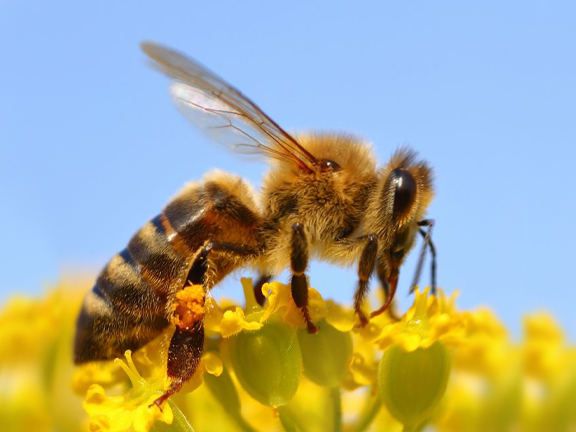Pollinators: Bees
About the Activity
Explore the role bees play in the fascinating process of pollination.
You’ve probably seen honey bees buzzing around flowers and know they make honey, but there is so much more to these fuzzy bugs! Get busy making your own craft honey bee while learning about how bees help pollinate.
Materials
These simple art supplies are all you’ll need to create your own bee:
toilet paper roll
paper
pipe cleaners
glue
Activity Steps
Follow these simple steps to create your craft honey bee.
Before you start the activity, think about these amazing facts: Did you know beekeeping has been practiced for thousands of years, dating back to the ancient Egyptians. Archeologists have found jars of honey that were still good to eat.
In fact, honey bees are responsible for 1/3 of the food that we eat. Imagine that! If you divided your food into 3 equal parts, one of those is thanks to the bees.
Using the picture as a guide, adhere the pieces together as shown.

Honey comb that holds honey and larva is made out of hexagon shaped cells. The hexagon is the perfect shape that is strong and connects together so that little wax is wasted. The wax is created by special wax glands found on the abdomen of the honey bee. This all happens when the bee is in the “House bee” stage.
Fold the pipe cleaner in half and sandwich the black hearts on the ends.
 Did you know?
Did you know?Bees have hair on their eyeballs. These tiny hairs help them know wind direction and how fast they are flying.
Bees, like butterflies, have a proboscis, the tongue of the bee, used like a straw to suck up fluids such as nectar, honey, or water.
Glue on the black strips, eyes, hearts, and wings.
Honey bees use wax to seal, or “cap”, honeycomb cells filled with larva or honey. Capped honey tells the beekeeper that the honey is ready. You can often buy honey still in the wax comb. People will chew on the comb and swallow the honey. Yum!
Test Your Knowledge
See how well you know bees now and find great activities to try next!
Reflection Questions
Questions for your kids and teens.
What would a world without bees be like?
What makes bees unique?
What makes a bee a good pollinator?
Investigate and Explore
Take what you’ve learned to the next level to learn more and explore the possibilities.
Next time you go to the grocery store, look around. So much food! All this came because of pollination. Pollen was transferred from one flower to another to help the plant grow seeds for reproduction.
Want to learn even more about bees?
Download the 4-H Bee Guide and get to know these fascinating creatures better.





